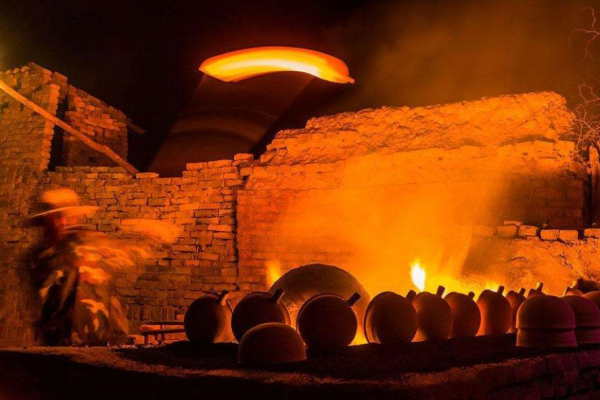내화성 벽돌의 정의: 불응 성있는 벽돌은 용광로 라인에 사용되는 고온 재료입니다., 가마, 기타 열 처리 장비. 그들은 극심한 온도를 견딜 수 있도록 설계되었습니다, 가혹한 화학 물질, 그리고 정기적 인 건축 자재가 실패하게하는 다른 조건.
응용 프로그램에 적합한 내화 재료를 선택하는 것의 중요성: 적절한 내화 재료를 선택하는 것은 용광로의 무결성을 유지하고 최적의 성능을 달성하는 데 중요합니다.. 잘못된 자료를 사용하면 비용이 많이 드는 수리가 발생할 수 있습니다, 효율성 감소, 그리고 심지어 안전 위험조차도.
다양한 유형의 내화 벽돌에 대한 개요: 내화성 벽돌은 여러 유형과 구성으로 제공됩니다, 고유 한 특성과 장점이 있습니다. 가장 일반적인 유형 중 일부는 Firebricks입니다, 높은 알루미나 벽돌, 실리카 벽돌, 멀라이트 벽돌, 점토 벽돌, 마그네시아 벽돌, 그리고 AZS 벽돌.


응용 프로그램 이해
용광로/킬른/오븐의 작동 조건을 이해하는 것의 중요성: 올바른 내화 재료를 선택합니다, 사용될 환경을 철저히 이해하는 것이 필수적입니다.. 온도와 같은 요인, 화학 성분, 다른 변수는 모두 재료의 성능에 영향을 미칩니다..
내화성 벽돌을 선택할 때 고려해야 할 요소: 내화성 벽돌을 선택할 때, 고려해야 할 몇 가지 주요 요소가 있습니다. 여기에는 온도 범위가 포함됩니다, 화학 성분, 내마모성, 열 충격 저항, 열 전도성, 그리고 다공성.
내화 벽돌의 종류
에이. 내화 벽돌: Firebrick은 내화 점토로 만들어지고 열 충격 저항이 우수합니다.. 용광로 라이닝 및 굴뚝 안감과 같은 고온 응용 분야에서 일반적으로 사용됩니다..
비. 높은 알루미나 벽돌: 높은 알루미나 벽돌은 Alumina 및 기타 내화성 재료로 만들어집니다., 그리고 그들의 탁월한 힘과 내마모성으로 유명합니다.. 그들은 종종 철강 및 기타 중공업 응용 프로그램에 사용됩니다..
기음. 실리카 벽돌: 실리카 벽돌은 실리카로 만들어졌으며 산성 환경에 내성이 있습니다.. 그들은 종종 유리 및 도자기 산업에서 사용됩니다..
디. 물라이트 벽돌: 멀라이트 벽돌은 멀라이트로 만들어집니다., 고온 저항으로 유명한 미네랄 유형. 그들은 종종 철과 강철 생산에 사용됩니다..
이자형. 점토 벽돌: 점토 벽돌은 화재 점토로 만들어지며 종종 벽난로 안감 및 굴뚝과 같은 저온 응용 분야에서 사용됩니다..
에프. 마그네시아 벽돌: 마그네시아 벽돌은 마그네시아로 만들어지며 알칼리성 환경에 매우 저항력이 있습니다.. 그들은 종종 시멘트와 석회 생산에 사용됩니다..
G. AZS 벽돌: AZS 화재 벽돌은 Alumina로 만들어집니다, 지르코니아, 그리고 실리카, 고온과 열 충격에 매우 강합니다.. 그들은 종종 유리 및 철강 산업에서 사용됩니다..


올바른 내화 벽돌 재료를 선택합니다
특정 내화 벽돌 재료를 선택할 때 고려해야 할 요소
화학 성분: 내화성 벽돌의 각 유형은 특정 화학 성분을 처리하도록 설계되었습니다.. 선택한 재료가 응용 프로그램의 화학 성분에 적합한 지 확인하십시오..
열전도율: 열전도율은 열이 재료를 통해 이동하는 속도를 측정합니다.. 응용 프로그램에 효율적인 열 전달이 필요한 경우, 열전도율이 높은 벽돌을 선택하십시오.
마모 저항: 마모 저항은 재료 흐름 또는 높은 기계적 영향을 포함하는 응용 분야에 필수적입니다.. 신청서에 마모 저항이 필요한 경우, 경도가 높은 파이어 브릭을 선택하는 것을 고려하십시오.
다공성: 다공성은 열 충격을 견딜 수있는 벽돌의 능력에 영향을 미칩니다. 응용 프로그램에 빠른 온도 변경이 필요한 경우, 다공성이 낮은 내화용 벽돌을 선택하는 것을 고려하십시오.
다양한 유형의 내화 벽돌 비교
강점과 약점: 내화성 벽돌의 각 유형에는 고유 한 강점과 약점이 있습니다., 응용 프로그램에 따라. 예를 들어, Firebricks는 우수한 열 충격 저항을 가지고 있습니다, 그러나 마모 저항성이 좋지 않습니다.
소송 비용: 다른 내화성 소방 재료의 비용은 사용 된 원자재와 제조 공정에 따라 다릅니다.. 특정 유형의 내화성 벽돌을 선택할 때 예산을 고려하십시오..


응용 프로그램에 적합한 내화성 벽돌 재료를 선택하기위한 팁
전문가와 상담하십시오: 응용 프로그램에 가장 적합한 내화성 벽돌 유형이 확실하지 않은 경우, 전문가와 컨설팅을 고려하십시오. 특정 요구에 따라 정보에 근거한 결정을 내릴 수 있습니다..
작동 조건을 고려하십시오: 응용 프로그램의 운영 조건, 온도와 같은, 화학 성분, 그리고 기계적 영향, 내화성 벽돌 재료의 선택을 안내해야합니다.
응용 프로그램의 수명을 고려하십시오: 신청서에 장기 사용이 필요한 경우, 수명이 길고 유지 보수가 적은 내화 벽돌 재료를 선택하는 것을 고려하십시오..
내화성 벽돌의 설치 및 유지 보수
내화성 벽돌 설치를위한 모범 사례
내화성 벽돌이 올바르게 정렬되고 평평한 지 확인.
효율적인 열 전달 및 단열재를 보장하기 위해 고품질 박격포 및 단열재를 사용하십시오..
용광로를 발사하기 전에 벽돌이 제대로 치료되도록합니다..
일반적인 유지 보수 문제 및이를 해결하는 방법
균열과 손상: 열 충격 또는 기계적 영향으로 인해 균열 및 손상이 발생할 수 있습니다.. 정기 검사는 문제가 심해지기 전에 문제를 식별하는 데 도움이 될 수 있습니다..
부식: 응용 프로그램의 화학적 조성으로 인해 부식이 발생할 수 있습니다. 부식에 내성이있는 내화 벽돌 재료를 선택하면이 문제를 예방할 수 있습니다..
부식: 물질 흐름이나 마모로 인해 침식이 발생할 수 있습니다. 내마모성이 높은 저항 벽돌 재료를 선택하면이 문제를 예방할 수 있습니다..
정기 검사 및 수리의 중요성
정기 검사는 문제가 심해지기 전에 문제를 식별하고 비용이 많이 드는 수리로 이어질 수 있습니다..
신속한 수리는 수명을 연장하는 데 도움이 될 수 있습니다 가마용 내화물 벽돌 다른 용광로 구성 요소의 손상을 방지합니다.
결론
핵심 요점의 요약: 효율적이고 안전한 용광로 작동을 보장하는 데 적용 할 수있는 올바른 내화성 소방 재료를 선택하는 것이 중요합니다..
최종 생각: 운영 조건을 고려하여, 수명, 응용 프로그램의 유지 보수 요구 사항, 어떤 내화성 벽돌 자료를 선택 해야하는지에 대한 정보에 근거한 결정을 내릴 수 있습니다..
적절한 설치 및 유지 보수, 내화성 벽돌은 장기적으로 제공 할 수 있습니다, 신뢰할 수있는 성능.
